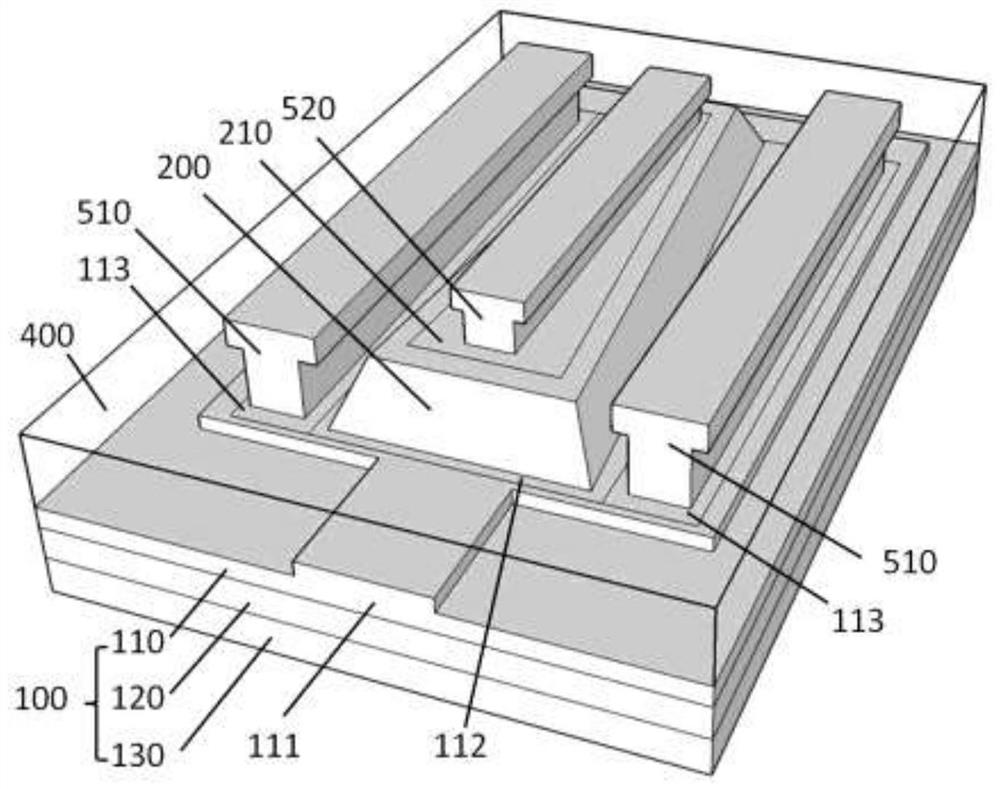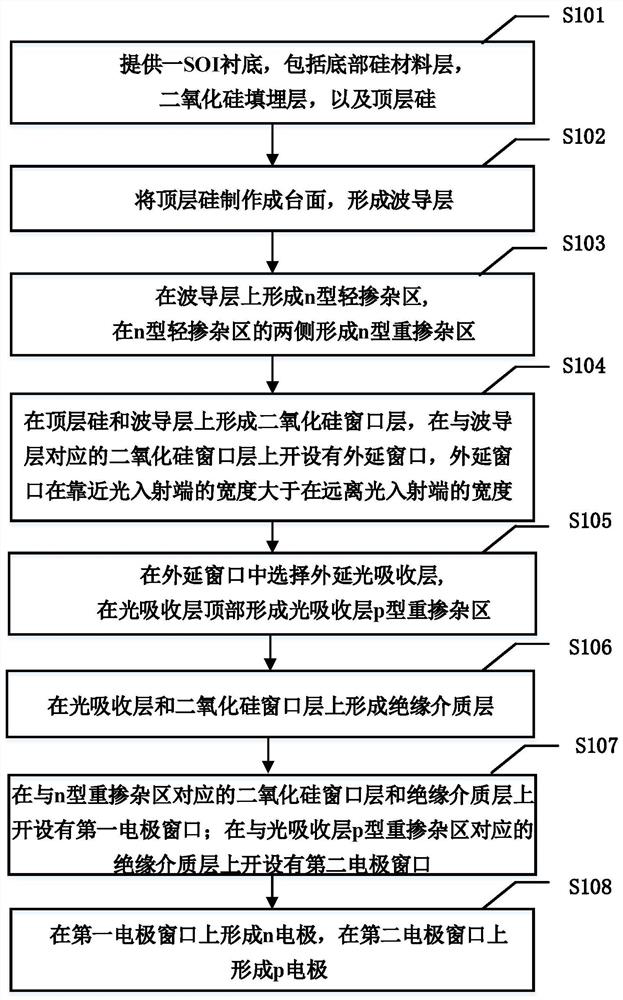A silicon-based detector with gradually changing width and its preparation method
A detector and silicon-based technology, applied in the field of optical interconnection, can solve the problems of difficult to meet the optical absorption length, large series resistance of devices, and low optical responsivity at the same time, achieve high bandwidth, high responsivity, and increase saturated optical power Effect
- Summary
- Abstract
- Description
- Claims
- Application Information
AI Technical Summary
Problems solved by technology
Method used
Image
Examples
Embodiment Construction
[0027] In order to make the object, technical solution and advantages of the present invention clearer, the present invention will be further described in detail below in conjunction with specific embodiments and with reference to the accompanying drawings.
[0028] The saturation characteristics of photodetectors are affected by thermal effects, space charge effects, and voltage division by series resistors. The thermal effect is determined by the structure of the device and the heat dissipation characteristics of the material, while the space charge effect and the series resistance voltage division can change the saturation characteristics of the device by changing the electric field strength of the depletion layer of the photodetector. The series resistance is determined by the device material and fabrication process. The space charge effect mainly depends on the structure of the photodetector. On the one hand, it is necessary to optimize the device structure to increase t...
PUM
| Property | Measurement | Unit |
|---|---|---|
| length | aaaaa | aaaaa |
| electrical resistivity | aaaaa | aaaaa |
| electrical resistivity | aaaaa | aaaaa |
Abstract
Description
Claims
Application Information
 Login to View More
Login to View More - R&D Engineer
- R&D Manager
- IP Professional
- Industry Leading Data Capabilities
- Powerful AI technology
- Patent DNA Extraction
Browse by: Latest US Patents, China's latest patents, Technical Efficacy Thesaurus, Application Domain, Technology Topic, Popular Technical Reports.
© 2024 PatSnap. All rights reserved.Legal|Privacy policy|Modern Slavery Act Transparency Statement|Sitemap|About US| Contact US: help@patsnap.com










